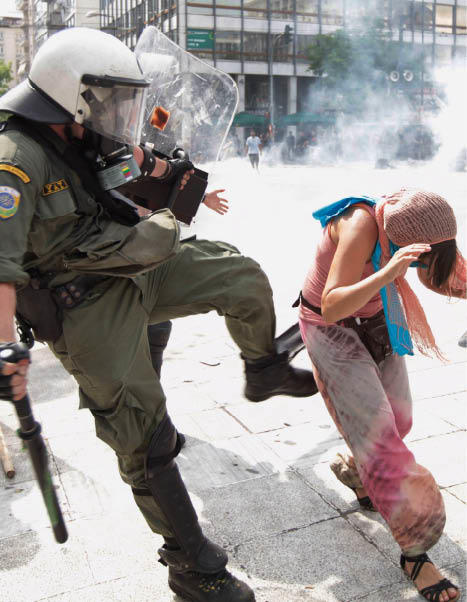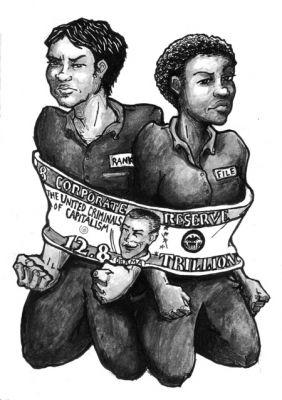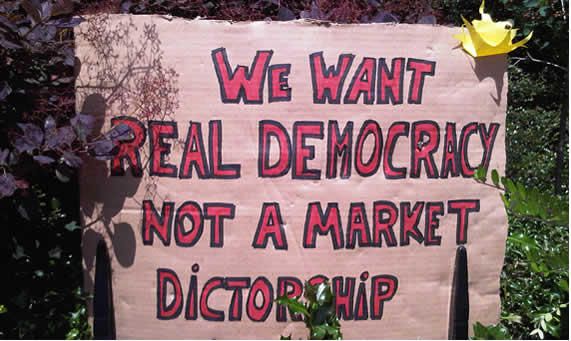Introduction
Representative democracy is based on the principle of electing an individual or official to represent a group of people. The concept is often referred to as indirect democracy. The elected officials are charged with the responsibility of safeguarding the welfare of the electorate. They should be answerable to those who elected them. Examples of officials elected through representative democracy include members of the senate and the presidents of democratic nations. The powers of these officials are curtailed by the constitution. The constitution plays an important regulatory role by ensuring that the individuals work for the benefit of their electorate, rather than for their own selfish gains.
However, rampant cases of crises associated with representative democracy are evident. The most prevalent of these include dictatorship, oligarchy, officials pursuing their own ambitions, and bribing of representatives. For this reason, most people today hate politics. They feel that leaders are working towards their own interests instead of addressing the wellbeing of the electorate.
Critical Bibliography
In the presentation, a variety of sources are used. The presenter seeks to address the question of whether or not there is a crisis of representative democracy. A lot of material evidence is needed to address this question. The sources used in the presentation include books and journals obtained from online databases. To obtain the sources, the Google scholar search engine was used. Key words, such as representative democracy, oligarchy and dictatorship, were used in the search. The sources that were relevant to the topic were selected.
The sources provide information about representative democracy. They highlight instances where the terms and conditions of this form of democracy, as stipulated in the constitution, have been violated. The sources compare the status of representative democracy today with what it used to be in the past. It is clear that the principles of this form of governance are slowly getting eroded. Qualitative data is provided. In addition, the current state of affairs in most representative democracies is analysed. Instances of crises are highlighted in the sources. Oligarchy and dictatorship are identified as the major forms of crises in representative democracy today.
The sources also provide conceptual frameworks. An example is the model used in democracy. Case studies are also highlighted. The cases are important since they help to practically examine the evidence available. Useful examples are provided in the case studies. The issue of dictatorship is clearly highlighted, where democratically elected leaders fail to adhere to the will of the people. For example, democratic governments have outlawed peaceful demonstrations and used excessive force against demonstrators.
However, most of the sources are not peer reviewed. As such, they may provide information that is not properly researched on. In addition, majority of them involve studies conducted by a single author, which increases chances of biasness.
Presentation Structure
The presenter argues that there is a crisis in representative democracy. The major causes of these problems involve oligarchy and dictatorship. The presentation begins by first posing the question “is there a crisis of representative democracy?”. Features of this form of governance are then introduced. They include respect of human rights and the rule of law. The introduction makes the subject more accessible to the audience. The audience will get a clear picture of the matters discussed in the presentation. It will be easier to prove to them that representative democracy is in turmoil.
The image below shows how dictatorship has led to problems in representative democracy. The citizens are no longer allowed to freely express themselves:

The presentation proceeds to state that the question of representative crisis has elicited debate across the world. At this juncture, the presenter engages the audience. The question will help the audience critically analyse the evidence provided and make their own judgments over the issue. The presentation concludes by providing a general overview of representative democratic crisis. The crisis is defined as the gaps that exist between democratic organisations and the public. The conclusion makes the subject more accessible to the audience, leading to better understanding of the topic.
Presentation Performance
The presentation uses a number of visual aids. Font, colour, and images are of great importance. The font used is Calibri size 22. The size is larger than the one used in the text that follows the questions. The difference in font size is used to distinguish the questions from the rest of the text. The questions stand out as sub-topics. The text following the presentation questions uses Calibri font size 20. The size makes it legible to the audience. The conclusion uses Cambria font 26. The font colour used is dark blue. The hue draws the attention of the audience to the presentation, making the message more appealing to read.
Images used in the presentation are relevant to the question posed. They clearly put across the message that representative democracy is in a crisis. The message is also self explanatory, which helps the audience to follow with a lot of ease. Two of the images used are coloured, making the presentation more interesting to the audience. Coloured images are more appealing compared to those that are not. The third image is not coloured. However, it is equally captivating to the audience. The image is an interesting drawing. It helps the presenter to put across their views on oligarchy.
The drawing below shows how oligarchy has led to crises in representative democracy. Power is concentrated in the hands of few people:

It is important to appear confident when making the presentation. The presenters should be bold and maintain eye contact with the audience to show that they believe in what they are saying. Their body language should also portray contempt to put across the crisis message. The body language and voice should make it evident to the audience that the presenter disapproves oligarchy, dictatorship, and other ills affecting representative.
Teamwork
The success of the presentation is attributed to the input of the team members. The members are expected to participate right from the selection of sources, analysis of data, to the presentation. The contribution of each member is taken into consideration to encourage participation. Information that is not clear is carefully analysed to ensure that all members are in agreement. All participants have equal opportunities to contribute to the presentation question. However, coordination is of great importance. There is a group leader to regulate the activities of the team. However, the leader is not superior to the others. They only help to restore order in the group.
The group leader is charged with the responsibility of ensuring that the presentation is consistent. During the presentation, members are assigned specific tasks to ensure that they do not provide conflicting information to the audience. However, a number of problems are associated with team work. For example, there are cases of conflicting views. Some members may feel that their views are overlooked. The group leader can also overstep their mandate and impose their views on the others.
Lessons from the Practice Presentation
The practice presentation was of great importance to all members of the group. It helped the members to acquire good presentation skills. It enabled the students to learn how to gather and select sources more effectively. The members also learnt how to analyse information from diverse sources and present it in a systematic and logical manner. The practice presentation also helped the team members to learn how to work as a group. Members appreciated the importance of accommodation. Working as a group required all the members to accommodate the others. For example, this value enabled the team members to come into a consensus that there is a crisis in representative democracy.
The image below proves that there is a crisis in representative democracy. Democracy is shifting to dictatorship.

The presentation skills of the team members have greatly improved. They are in a better position than they were at the beginning of the module. For example, the members have learnt how to appropriately use visual aids in their presentations. The practice has made presentations more interesting. The members have also learnt how to exude confidence during presentations. At the beginning of the module, most individuals were shy and would not maintain eye contact with the audience.
However, there is still room for improvement. For example, in future, members should cite the sources of their information. The images used in the presentation are not cited, which makes it hard for the audience to determine the authenticity of the group’s response to the question. Furthermore, when images are used, they should be introduced.
Conclusion
The presentation has proved without doubt that there is a crisis in representative democracy. To answer the presentation question, the group members have made a number of arguments, supported by case studies and images obtained from books and journals. Oligarchy and dictatorship have been identified as the leading causes of this crisis. However, there are other minor factors that lead to the crisis. They include scenarios where officials pursue their own ambitions and bribing of representatives. Drastic measures must be taken to restore democracy if the wishes of the electorate are to be honoured.
Bibliography
Alonso, S, J Keane, M Wolfgang & M Fotou, The future of representative democracy, Cambridge University Press, Cambridge, 2011. Web.
Bailey, D, Dictatorship, Mason Crest, Broomall, 2013. Web.
Budge, I, ‘Direct and representative democracy: are they necessarily opposed?’, Representation. vol. 42, no. 1, 2006, pp. 1-12. Web.
Chambers, C, ‘Consistent representative democracy’, Games and Economic Behavior. vol. 62, no. 2, 2008, pp. 348-363. Web.
Chipkin, I, ‘Democracy and dictatorship’, Social Dynamics. vol. 35, no. 2, 2009, pp. 375-393. Web.
Gauja, A, Political parties and elections legislating for representative democracy, Ashgate Publishing Company, Farnham, 2010. Web.
Gelletly, L, Oligarchy, Mason Crest, Broomall, 2013. Web.
Premat, C, ‘Castoriadis and the modern political imaginary: oligarchy, representation, democracy’, Critical Horizons. vol. 7, no. 1, 2006, pp. 251-275. Web.
Urbinati, N, Representative democracy principles and genealogy, University of Chicago Press, Chicago, 2006. Web.
Zielonka, J, ‘The future of representative democracy’, West European Politics. vol. 35, no. 3, 2012, pp. 694-696. Web.